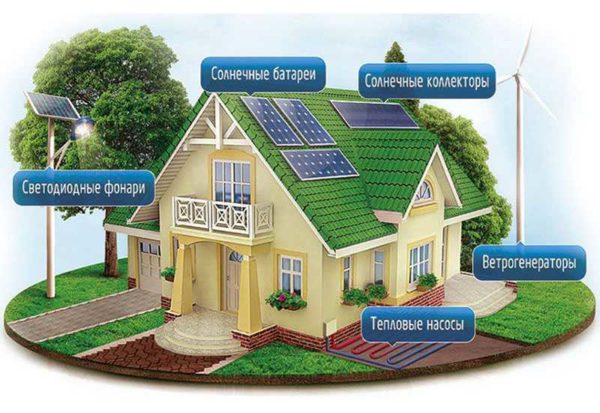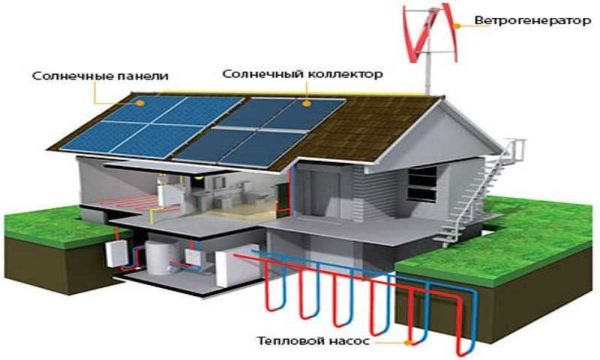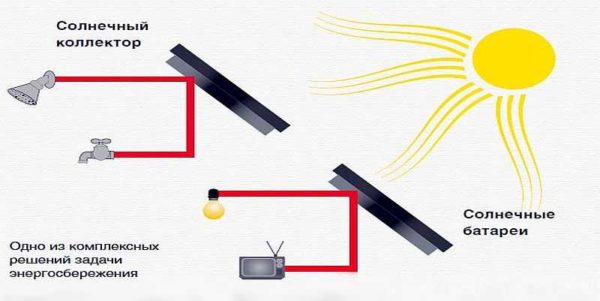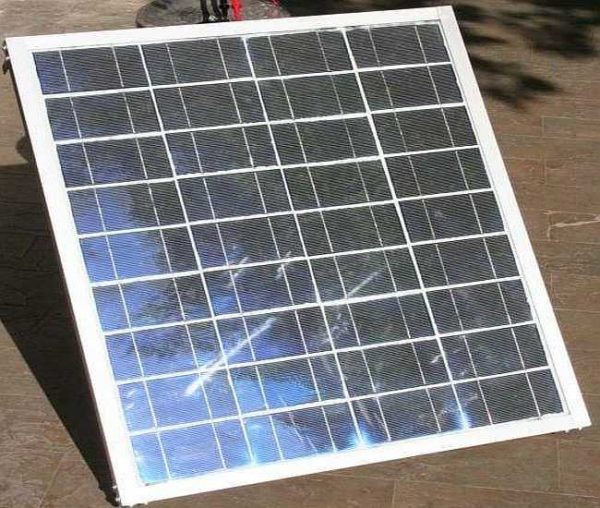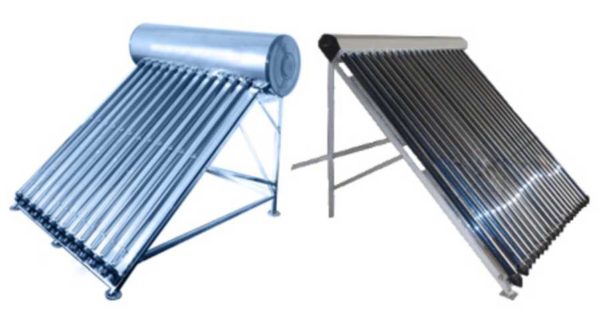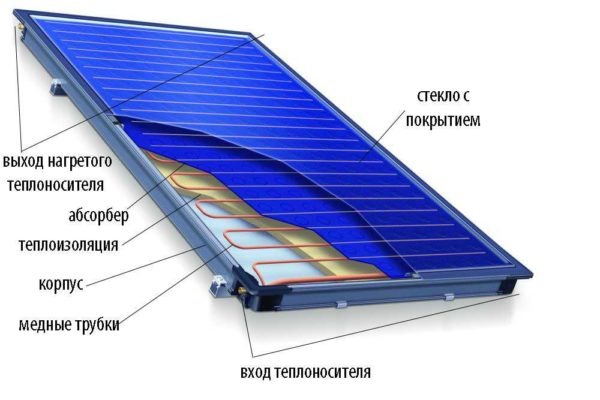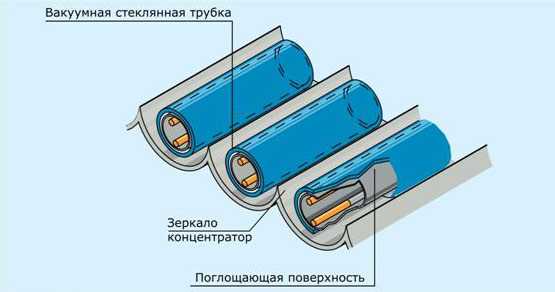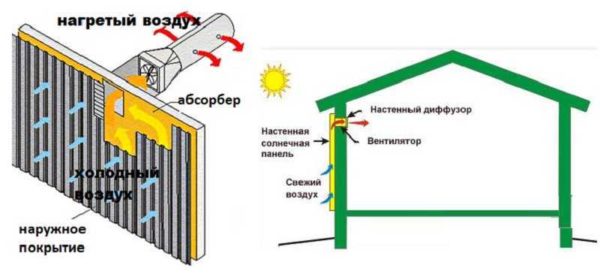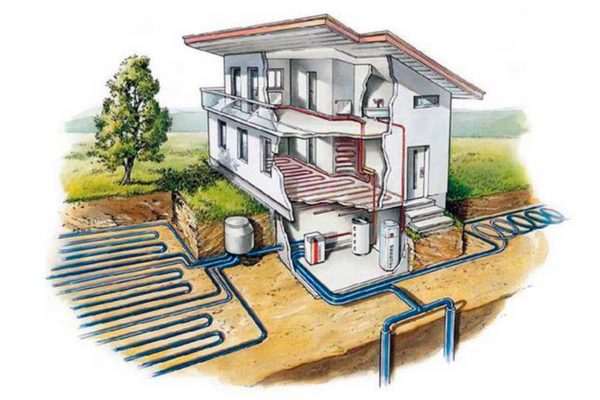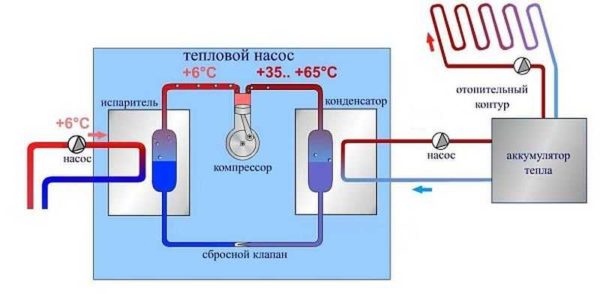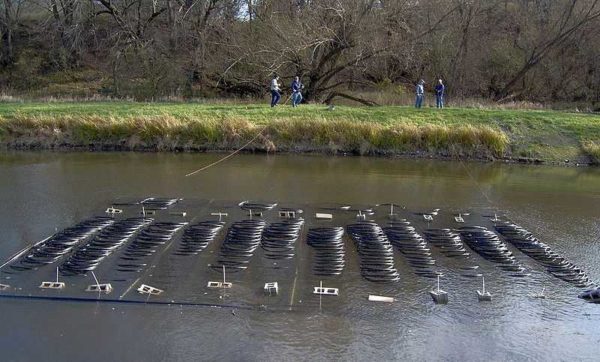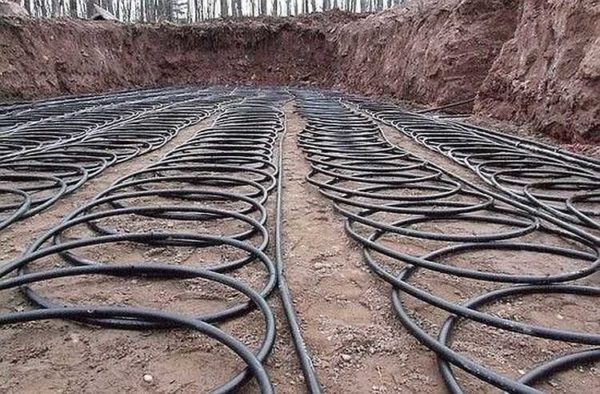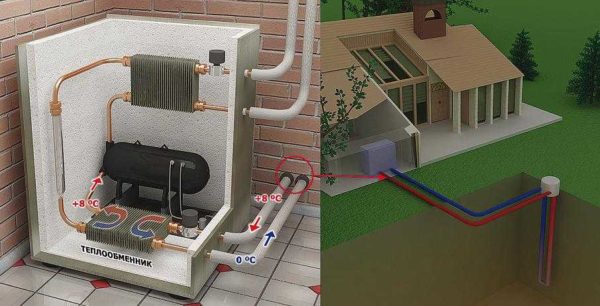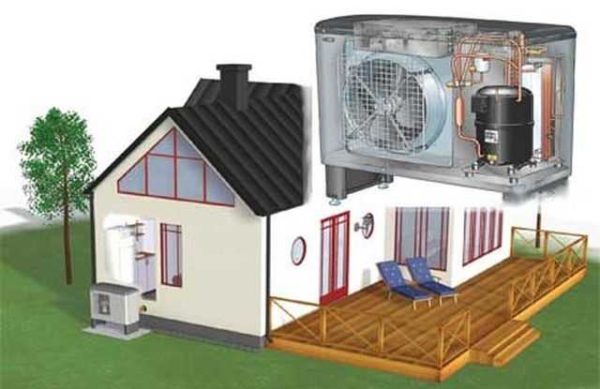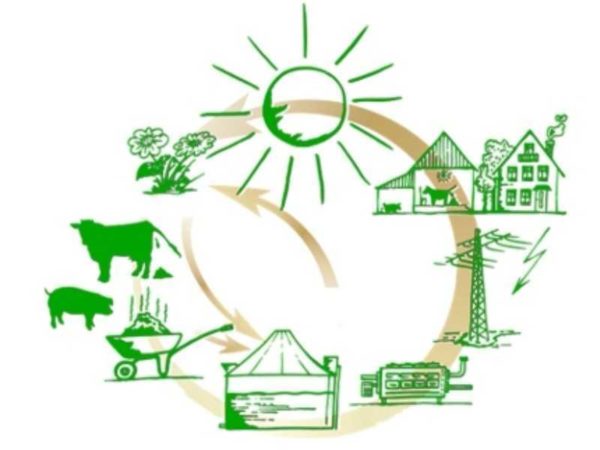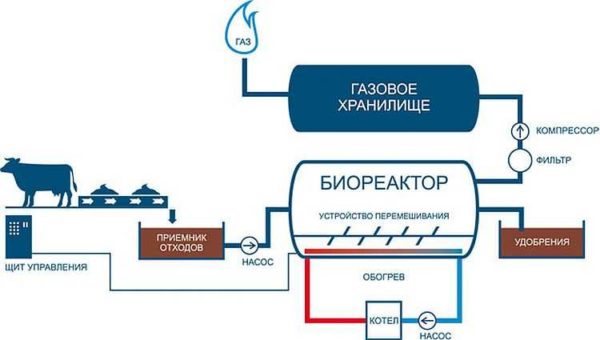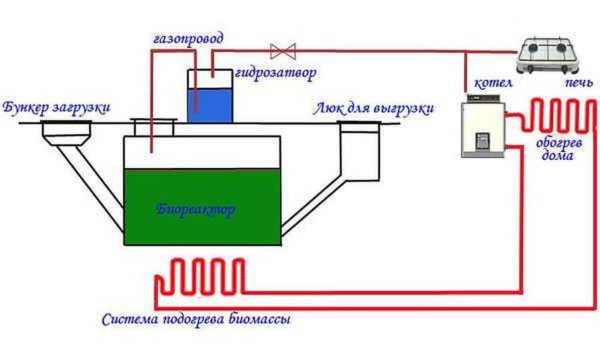Alternative energy for a private house
For owners of private houses, there is an opportunity to significantly reduce utility bills or not use the services of heat, electricity and gas suppliers at all. You can even provide a large farm, and, if you wish, sell the surplus. This is real and some have already done it. For this, alternative energy sources are used.
The content of the article
Where can you get energy and in what form
In fact, energy, in one form or another, is practically everywhere in nature - sun, wind, water, earth - energy is everywhere. The main task is to extract it from there. Mankind has been doing this for more than one hundred years and has achieved good results. At the moment, alternative energy sources can provide a house with heat, electricity, gas, warm water. Moreover, alternative energy does not require any extra skills or knowledge. You can do everything for your home with your own hands. So what can be done:
- Use solar energy to generate electricity or to heat water - for domestic hot water or low temperature heating (solar panels and collectors).
- Convert wind energy into electricity (wind turbines).
- Heat the house using heat pumps, taking heat from air, earth, water (heat pumps).
- Obtain gas from waste of domestic animals and poultry (biogas plants).
All alternative energy sources are capable of fully meeting human needs, but this requires too large investments and / and too large areas. Therefore, it is wiser to make a combined system: to receive energy from alternative sources, and if there is a shortage, to “get” it from centralized networks.
Using solar energy
One of the most powerful alternative energy sources for the home is solar radiation. There are two types of installations for solar energy conversion:
- solar panels generate electric current;
- solar collectors heat the water.
Do not think that the installations only work in the south and only in summer. They work well in winter too. In clear weather with snowfall, energy production is only slightly lower than in summer. If your area has a large number of clear days, you can use a similar technology.
Solar panels
Solar cells are assembled from photovoltaic converters, which are made on the basis of minerals, which, under the influence of sunlight, emit electrons - generate an electric current. For private use, silicon photoconverters are used. By their structure, they are monocrystalline (made from one crystal) and polycrystalline (many crystals). Monocrystalline ones have a higher efficiency (13-25% depending on quality) and a longer service life, but they are more expensive. Polycrystalline ones generate less electricity (9-15%) and fail faster, but have a lower price.
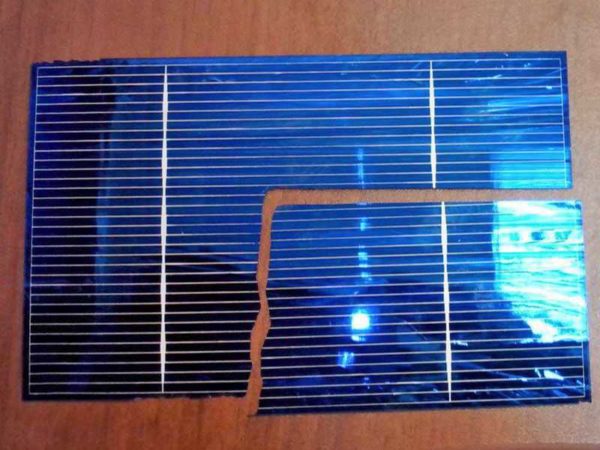
This is a polycrystalline photoconverter.They must be handled carefully - they are very fragile (monocrystalline too, but not to the same extent)
DIY solar battery assembly is not difficult. First, you need to purchase a certain amount of silicon solar cells (the amount depends on the required power). Most often, they are bought on Chinese trading platforms such as Aliexpress. Then the procedure is simple:
- Make a frame (from wooden planks or metal corners). Install a substrate on it. Transparent - glass, plexiglass (monolithic polycarbonate) - if the solar battery will hang on the window, and opaque (plywood, painted white), if you will not install the battery on the roof.
- Connect the cells into one battery (in parallel) using aluminum conductors. The conductors can be immediately soldered to the plates (they cost a little more) or you have to buy them separately and then solder them yourself.
- The finished battery must be sealed. It is filled with epoxy resin or glued with a special EVA film. When sealing, it is necessary to ensure that there are no voids - air bubbles. They greatly reduce the performance of the battery, so we drive them out carefully.
A few words about why the substrate for the solar panel (battery) should be painted white. The operating temperature range of silicon wafers is from - 40 ° C to + 50 ° C. Operation at higher or lower temperatures leads to rapid component failure. On the roof, in summer, in an enclosed space, the temperature can be much higher than + 50 ° C. Therefore, a white color is needed - so as not to overheat the silicon.
Solar collectors
Solar collectors can be used to heat water or air. Where to direct the water heated by the sun - to taps for hot water supply or to the heating system - you choose yourself. Only the heating will be low-temperature - for a warm floor, what is required. But in order for the temperature in the house not to depend on the weather, the system must be made redundant so that, if necessary, another heat source is connected or the boiler switches to another energy source.
There are three types of solar collectors: flat, tubular and air. The most common are tubular, but others also have a right to exist.
Flat plastic
Two panels - black and transparent - are combined into one body. A snake-shaped copper pipeline is located between them. The lower dark panel heats up from the sun. copper is heated from it, and from it - water passing through the labyrinth. This method of using alternative energy sources is not the most efficient, but attractive because it is very simple to implement. Thus, you can heat water in pool... It will only be necessary to loop its supply (using a circulation pump). In the same way, you can heat water in containers for summer shower or use it for household needs. The disadvantage of such installations is low efficiency and productivity. It takes either a long time or a large number of flat collectors to heat a large volume of water.
Tubular collectors
These are glass tubes - vacuum or coaxial - through which water flows. A special system allows maximum concentration of heat in the tubes, which is transferred to the water flowing through them.
The system necessarily has a storage tank in which the water is heated. The circulation of water in the system is provided by a pump. You cannot make such systems on your own - making glass tubes with your own hands is problematic and this is the main drawback. Together with the high price tag, it is holding back the widespread adoption of this energy source for the home.And the system itself is very effective, it copes with the heating of water for hot water supply with a bang and makes a decent contribution to heating.
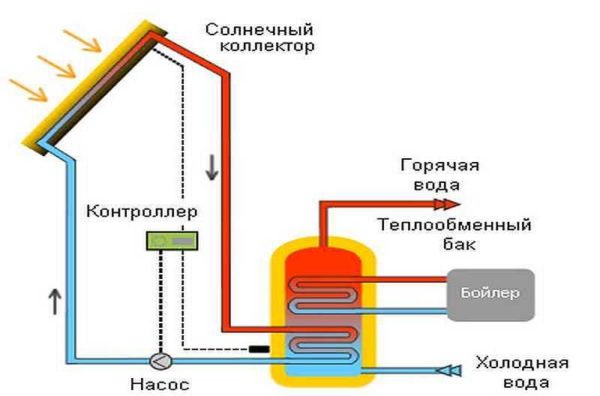
Scheme of the organization of heating and hot water supply due to alternative energy sources - using solar collectors
Air collectors
In our country, they are very rare and in vain. They are simple, you can easily make them yourself. The only negative is that a large area is required: they can occupy the entire southern (eastern, southeastern) wall. The system is very similar to flat collectors - black bottom panel, transparent top, but they directly heat the air, which is forced (by a fan) or naturally directed into the room. Despite the seeming frivolity, in this way it is possible to heat small rooms during daylight hours, including technical or utility rooms: garages, summer cottages, sheds for livestock.
Such an alternative source of energy as the sun gives us its warmth, but most of it goes "nowhere". Catching a small portion of it and using it for personal needs is the task that all these devices solve.
Wind turbines
Alternative energy sources are good because they mostly relate to renewable resources. The most eternal, probably, wind. As long as there is atmosphere and sun, there is also wind. Maybe for a short period the air will be motionless, but not for long. Our ancestors used wind energy in mills, and modern man converts it into electricity. All that is required for this:
- a tower installed in a windy place;
- a generator with blades attached to it;
- storage battery and electric current distribution system.
Any tower can be built from any material. A storage battery is a battery, you can't think of anything here, but where to supply electricity is your choice. It only remains to make a generator. It can also be bought ready-made, but it is quite possible to make it out of an engine from household appliances - a washing machine, a screwdriver, etc. You will need neodymium magnets and epoxy resin, a lathe.
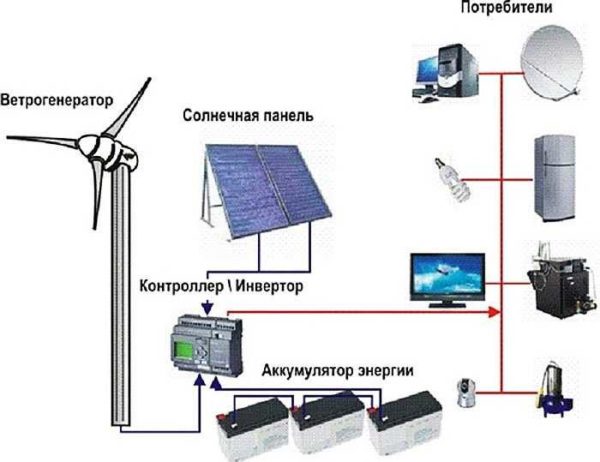
Scheme for providing a private house with electricity from alternative energy sources (wind generator and solar panels)
On the rotor of the motor, we mark the places for installing the magnets. They must be equidistant from each other. We grind the rotor of the selected motor, forming "seats". The bottom of the recess should be slightly tilted so that the surface of the magnet is tilted. Magnets are glued to the carved places on liquid nails, and they are filled with epoxy resin. The surface is then smooth with sandpaper. Next, you need to attach brushes that will remove the current. And that's it, you can assemble and run the wind generator.
Such installations are quite effective, but their power depends on many factors: the intensity of the wind, how correctly the generator is made, how effectively the potential difference is removed by the brushes, on the reliability of electrical connections, etc.
Heat pumps for home heating
Heat pumps use all available alternative energy sources. They take heat away from water, air, soil. In small quantities, this heat is there even in winter, so the heat pump collects it and redirects it to heat the house.
Principle of operation
Why are heat pumps so attractive? The fact that having spent 1 kW of energy for pumping it, in the worst case, you will get 1.5 kW of heat, and the most successful implementations can give up to 4-6 kW. And this does not in any way contradict the law of conservation of energy, because energy is spent not on obtaining heat, but not on pumping it. So no inconsistencies.
Heat pumps have three working circuits: two external and they are internal, as well as the evaporator, compressor and condenser. The scheme works like this:
- A coolant circulates in the first circuit, which removes heat from low-potential sources. It can be immersed in water, buried in the ground, or it can take heat away from the air. The highest temperature reached in this circuit is around 6 ° C.
- A heating medium with a very low boiling point (usually 0 ° C) circulates in the internal circuit. When the refrigerant is heated, it evaporates, the vapor enters the compressor, where it is compressed to high pressure. During compression, heat is generated, refrigerant vapors are heated to an average temperature of + 35 ° C to + 65 ° C.
- In the condenser, heat is transferred to the coolant from the third - heating - circuit. The cooling vapors condense and then enter the evaporator. And then the cycle repeats.
The heating circuit is best done in the form of a warm floor. Temperatures are most suitable for this. The radiator system will require too many sections, which is ugly and unprofitable.
Alternative sources of heat energy: where and how to get heat
But the greatest difficulties are caused by the device of the first external circuit, which collects heat. Since the sources are low-potential (there is little heat at the bottom), large areas are required to collect it in sufficient quantities. There are four types of contours:
- Pipes with coolant laid in water in rings. The reservoir can be anything - a river, a pond, a lake. The main condition is that it should not freeze through even in the most severe frosts. Pumps that pump heat out of the river work more efficiently; much less heat is transferred in stagnant water. Such a heat source is realized the easiest way - to throw pipes, tie a load. Only chances of accidental damage are high.
- Thermal fields with pipes buried below the freezing depth. In this case, there is only one drawback - large volumes of earthworks. We have to remove the soil over a large area, and even at a solid depth.
- Using geothermal temperatures. A number of deep wells are drilled, and a coolant circuit is lowered into them. What is good about this option is that it requires little space, but it is not always possible to drill to great depths, and drilling services cost a lot. It is possible, however, make the drilling rig yourselfbut the job is still not easy.
- Extraction of heat from the air. This is how air conditioners work with the possibility of heating - they take heat from the "outboard" air. Even at sub-zero temperatures, such units work, although at a not very "deep" minus - up to -15 ° C. To make the work more intense, you can use the heat from the ventilation shafts. Throw a few into it with a coolant and pump heat from there.
The main disadvantage of heat pumps is the high price of the pump itself, and the installation of heat collection fields is not cheap. In this case, you can save money by making the pump yourself and also laying the circuit with your own hands, but the amount will still remain considerable. The plus is that heating will be inexpensive and the system will operate for a long time.
Waste to income: biogas plants
All alternative energy sources are of natural origin, but you can only get double benefits from biogas plants. They process waste of domestic animals and poultry. As a result, a certain volume of gas is obtained, which, after purification and drying, can be used for its intended purpose. The remaining recycled waste can be sold or used in the fields to increase yields - a very effective and safe fertilizer.
Briefly about technology
The formation of gas occurs during fermentation, and bacteria living in the manure participate in this. Waste of any livestock and poultry is suitable for biogas production, but cattle manure is optimal. It is even added to the rest of the waste for "sourdough" - it contains exactly the bacteria needed for processing.
To create optimal conditions, an anaerobic environment is required - fermentation should take place without oxygen. Therefore, efficient bioreactors are closed containers. To make the process more active, regular mixing of the mass is necessary. In industrial plants, for this, stirrers with electric drives are installed, in home-made biogas plants these are usually mechanical devices - from a simple stick to mechanical stirrers that "work" by hand.
Two types of bacteria are involved in the formation of gas from manure: mesophilic and thermophilic. Mesophilic are active at temperatures from + 30 ° C to + 40 ° C, thermophilic - at + 42 ° C to + 53 ° C. Thermophilic bacteria work more efficiently. Under ideal conditions, gas production from 1 liter of usable area can reach 4-4.5 liters of gas. But maintaining a temperature of 50 ° C in a plant is very difficult and costly, although the costs are justified.
A little about designs
The simplest biogas plant is a drum with a lid and an agitator. An outlet is made in the lid for connecting a hose through which the gas enters the tank. You won't get a lot of gas from such a volume, but it will be enough for one or two gas burners.
More serious volumes can be obtained from an underground or aboveground bunker. If we are talking about an underground bunker, then it is made of reinforced concrete. The walls are separated from the ground with a layer of thermal insulation, the container itself can be divided into several compartments, in which processing will take place with a shift in time. Since mesophilic cultures usually work under such conditions, the whole process takes from 12 to 30 days (thermophilic cultures are processed in 3 days), therefore a time shift is desirable.
Manure enters through the loading bunker, from the opposite side, an unloading hatch is made, from where the processed raw materials are taken. The bunker is not completely filled with the bio-mixture - about 15-20% of the space remains free - gas accumulates here. To drain it, a tube is built into the lid, the other end of which is lowered into a water seal - a container partially filled with water. Thus, the gas is dehumidified - the already cleaned gas is collected in the upper part, it is discharged using another tube and can already be choked to the consumer.
Everyone can use alternative energy sources. It is more difficult for apartment owners to do this, but in a private house you can at least implement all ideas. There are even real examples of this. People fully meet the needs of their own and a large economy.

